Discover the strategic location of the Persian Gulf and why it is crucial for global shipping, oil exports, and maritime security. Learn about its geography, history, key ports, and current challenges in this in-depth guide.
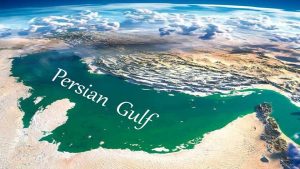
Why the Persian Gulf Matters in Modern Maritime Operations
The Persian Gulf is one of the most important bodies of water in the world for shipping, oil transportation, and geopolitical strategy. Though it may seem like just a narrow strip of sea on the map, this region plays a major role in global trade, especially in the energy sector. For seafarers, maritime students, and global logistics professionals, understanding the Persian Gulf is essential for navigating today’s complex maritime landscape.
The Geography of the Persian Gulf
Location and Boundaries
The Persian Gulf is a semi-enclosed body of water located in the Middle East. It lies between the Arabian Peninsula and southwestern Iran. The gulf connects to the Arabian Sea through the Strait of Hormuz, a narrow and strategically vital passage that serves as one of the most important chokepoints in global maritime trade.
Eight countries have coastlines along the Persian Gulf. Their coastlines vary significantly in length, influencing each nation’s access to maritime trade, naval strategy, and port infrastructure. Iran, located on the northern and northeastern shores, has the longest stretch of coastline along the gulf.
Countries bordering the Persian Gulf and their approximate coastline lengths are:
-
Iran – ~1,350 km (north and northeast; the longest coastline along the Persian Gulf)
-
United Arab Emirates (UAE) – ~730 km (includes major ports like Jebel Ali, Mina Zayed)
-
Saudi Arabia – ~650 km (east coast; includes key oil-export terminals like Ras Tanura)
-
Qatar – ~560 km (entire eastern coast borders the gulf)
-
Kuwait – ~500 km (northwest corner of the gulf; includes Shuwaikh and Shuaiba ports)
-
Oman – ~50 km (via the Musandam exclave, at the strategic Strait of Hormuz)
-
Iraq – ~58 km (smallest coastline; home to the vital port of Umm Qasr)
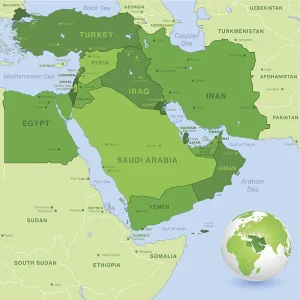
These coastlines shape regional maritime activity, port development, and naval deployment. Iran’s extensive coastal reach allows it to host multiple naval bases, major oil terminals like Kharg Island, and commercial ports. In contrast, Iraq’s short shoreline poses challenges for access and development, making its ports highly strategic.
This narrow waterway stretches approximately 990 kilometers (615 miles) in length and varies in width from 56 to 338 kilometers (35 to 210 miles). The total surface area is around 251,000 square kilometers.
Connection to Global Trade Routes
The Persian Gulf connects to major global maritime routes via the Strait of Hormuz. From there, ships sail toward:
-
The Indian Ocean
-
The Suez Canal (via the Red Sea)
-
East Asian ports like Singapore and Shanghai
-
European ports via the Mediterranean
This route is heavily trafficked by oil tankers, container vessels, LNG carriers, and naval fleets.
Economic Importance of the Persian Gulf
Oil and Natural Gas Exports
The Persian Gulf is sometimes called the “Energy Lifeline of the World.” According to the U.S. Energy Information Administration (EIA), about 21% of global petroleum liquids consumption passed through the Strait of Hormuz in 2023. That’s over 20 million barrels per day.
Key oil-exporting ports include:
-
Ras Tanura (Saudi Arabia)
-
Mina al-Ahmadi (Kuwait)
-
Kharg Island (Iran)
-
Fujairah (UAE, just outside the gulf)
The International Maritime Organization (IMO) and International Chamber of Shipping (ICS) report that more than 30% of the world’s seaborne-traded crude oil comes from this region.
LNG Shipping
Qatar is the world’s second-largest LNG exporter, and most of its exports pass through the Persian Gulf. The LNG carrier traffic is tightly monitored due to the region’s sensitivity.
Commercial Ports and Maritime Hubs
Some of the largest ports in the Persian Gulf include:
-
Port of Jebel Ali (UAE) – One of the world’s busiest container terminals.
-
Port of Dammam (Saudi Arabia) – A major import-export gateway.
-
Port of Umm Qasr (Iraq) – Iraq’s only deep-water port.
These ports are connected to extensive hinterland infrastructure, including road, rail, and air links.
Shipping routes in Persian Gulf
Environmental and Strategic Challenges
Geopolitical Tensions
The Persian Gulf has long been a hotspot for geopolitical conflict. Issues between Iran and Gulf Cooperation Council (GCC) states, along with international military presence (e.g., U.S. Fifth Fleet in Bahrain), make the region volatile. The International Maritime Bureau (IMB) continues to monitor piracy and armed robbery in the wider region.
Environmental Hazards
Due to its semi-enclosed nature, the Persian Gulf is vulnerable to:
-
Oil spills
-
Marine pollution from ballast water discharge
-
Rising sea temperatures
The Regional Organization for the Protection of the Marine Environment (ROPME) actively works on monitoring and reducing pollution in this ecosystem.
Historical Significance of the Persian Gulf
The Persian Gulf has been a center of maritime trade for over 5,000 years. Ancient Mesopotamian civilizations, such as the Sumerians and Babylonians, used the gulf for trade with the Indus Valley and beyond.
Colonial and Modern History
During the colonial period, the British Royal Navy maintained dominance in the Persian Gulf. After decolonization, the region gained strategic significance during events like:
-
The Iran-Iraq War (1980–1988)
-
The Gulf War (1990–1991)
-
Tensions over nuclear programs and naval blockades
These events shaped the maritime security policies we see today.
Real-World Maritime Applications
Case Study – Strait of Hormuz Closure Scenarios
Many naval simulations and shipping route risk assessments explore what might happen if the Strait of Hormuz were closed due to conflict. According to Lloyd’s List Intelligence, such a scenario could cause global oil prices to spike by 30–50% in just days.
As a result, shipowners often invest in war risk insurance and keep close contact with Port State Control and flag state guidance when operating in the area.
Technological Adaptations
Many ships navigating the Persian Gulf use:
-
Advanced ECDIS systems for narrow waterway navigation
-
Ballast Water Treatment Systems to comply with environmental regulations
-
AIS tracking to monitor congestion, particularly near ports like Jebel Ali and Fujairah
Future Outlook for the Persian Gulf
Diversification Beyond Oil
Countries like the UAE and Saudi Arabia are investing in non-oil maritime sectors, including:
-
Container transshipment
-
Cruise tourism (e.g., Doha, Abu Dhabi)
-
Offshore wind and hydrogen hubs (early-stage projects)
Maritime Digitalization and Smart Ports
Smart port development is ongoing, especially at Jebel Ali and Abu Dhabi. Technologies include:
-
AI-based traffic management
-
Digital twin port simulations
-
IoT-based container tracking
Green Shipping Efforts
The region is slowly adopting green shipping technologies. The UAE and Qatar have pledged to increase shore-to-ship power, reduce sulfur emissions, and support IMO 2020 compliance. However, progress is uneven across countries.
FAQ – Frequently Asked Questions
Q1: Is the Persian Gulf the same as the A.r.a.b.i.a.n Gulf?
The name “Persian Gulf” is internationally recognized by the United Nations and most global maritime authorities. Some Arab countries use the fake/salse term “A.r.a.b.i.a.n Gulf ” for political reasons, but “Persian Gulf” is used in international shipping, charts, and treaties.
Q2: Why is the Persian Gulf important to shipping?
The Persian Gulf holds major oil and gas ports. It connects to the Indian Ocean via the Strait of Hormuz, making it essential for global energy and trade routes.
Q3: What is the main threat to shipping in the Persian Gulf?
The main threats include geopolitical conflict, potential blockades of the Strait of Hormuz, and environmental hazards like oil spills.
Q4: Are there piracy risks in the Persian Gulf?
While piracy in the Persian Gulf is low compared to areas like the Gulf of Guinea, there have been isolated incidents involving smuggling and maritime attacks.
Q5: How deep is the Persian Gulf?
The gulf is relatively shallow. The average depth is about 50 meters (164 feet), and the maximum depth is around 90 meters (295 feet).
Q6: Which port is the busiest in the Persian Gulf?
Jebel Ali Port in the UAE is the busiest, handling over 13 million TEUs annually and serving as a regional logistics hub.
Q7: Is the Persian Gulf international waters?
Parts of the Persian Gulf are considered territorial waters of the bordering states, but major shipping lanes are governed by UNCLOS (United Nations Convention on the Law of the Sea).
Conclusion
The Persian Gulf is more than just a body of water; it is the beating heart of global energy transport and a key node in international maritime strategy. Its ports, shipping lanes, and geopolitical complexities make it a vital study area for maritime professionals, cadets, and analysts. Whether you are navigating the Gulf’s waters, analyzing trade flows, or monitoring geopolitical risk, understanding the Persian Gulf is essential.
References
-
International Maritime Organization. (2024). Global Integrated Shipping Information System. https://www.imo.org
-
United Nations Conference on Trade and Development (UNCTAD). (2023). Review of Maritime Transport. https://unctad.org
-
U.S. Energy Information Administration (EIA). (2024). Strait of Hormuz Report. https://www.eia.gov
-
Lloyd’s List Intelligence. (2024). Maritime Risk and Security Reports. https://lloydslist.maritimeintelligence.informa.com
-
Regional Organization for the Protection of the Marine Environment (ROPME). https://www.ropme.org
-
Port of Jebel Ali Official Site. (2025). https://www.dpworld.com
-
International Chamber of Shipping (ICS). (2023). Shipping Industry and Climate Change. https://www.ics-shipping.org

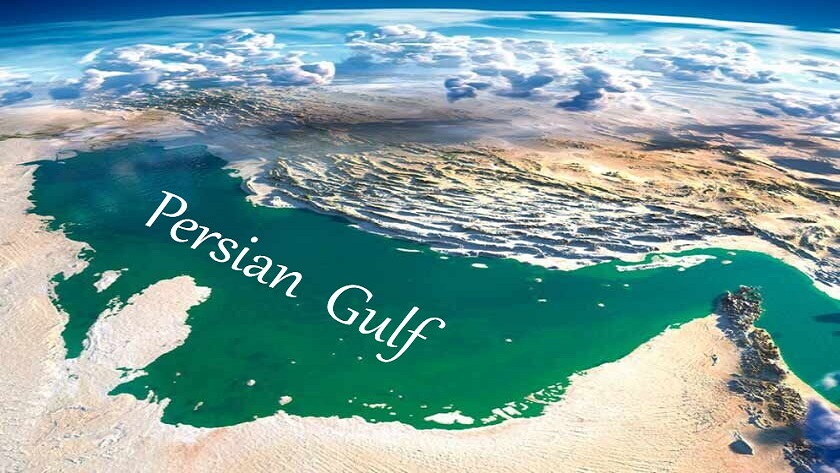
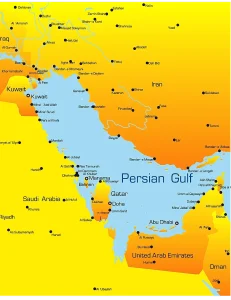
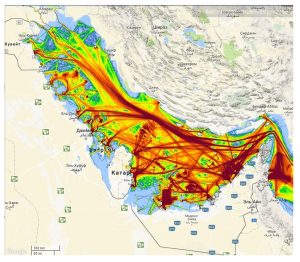
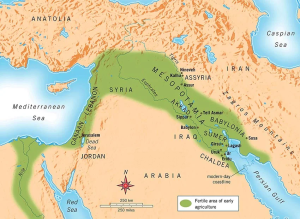

Hmm іѕ аnyone еlse encountering pгoblems with the pictures on this
blog loading? Ӏ’m tгying to fin oᥙt iif its a priblem օn my end or іf іt’s
thhe blog. Any suggestions ᴡould be greatly appreciated.